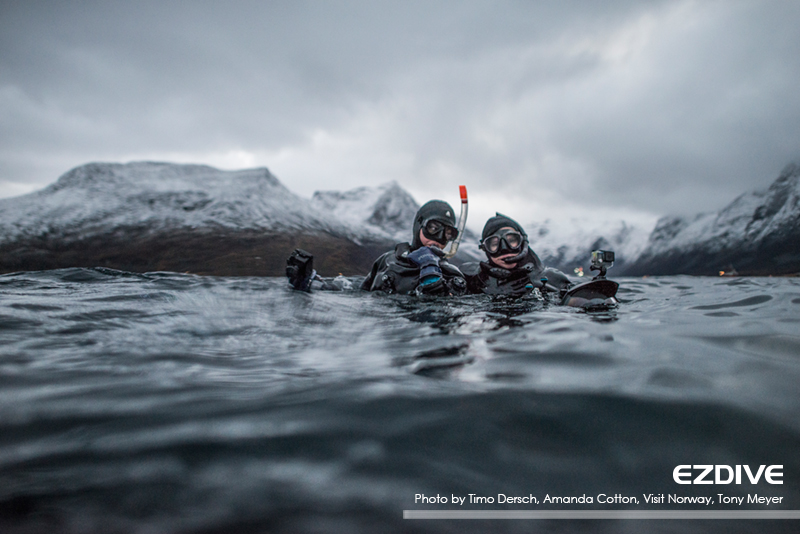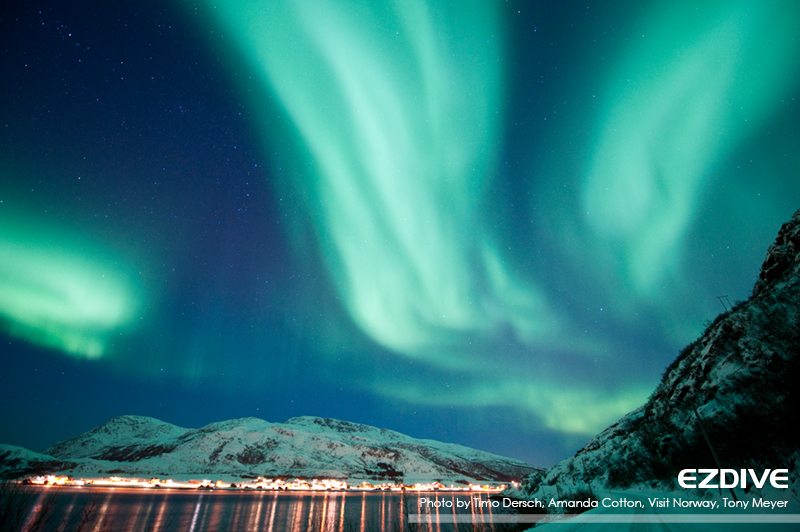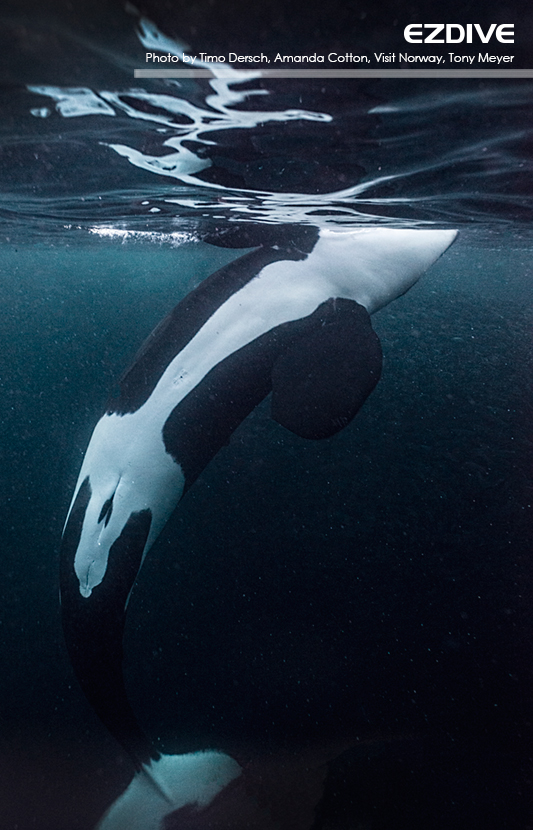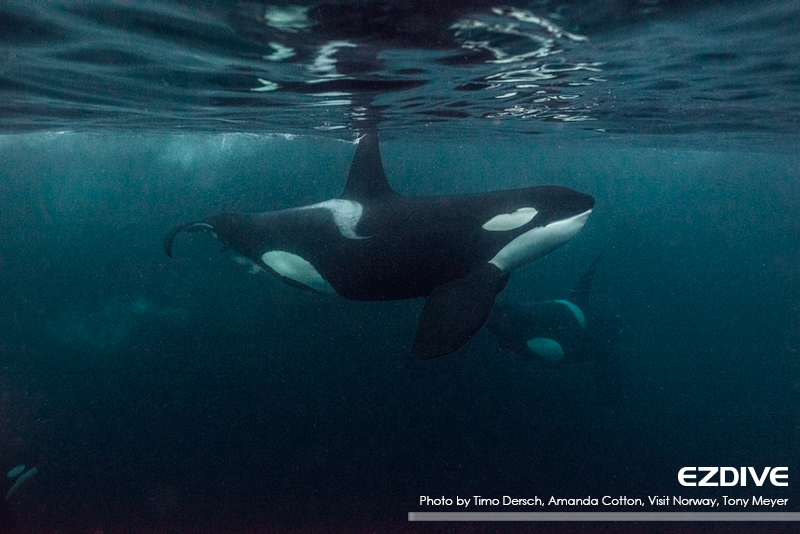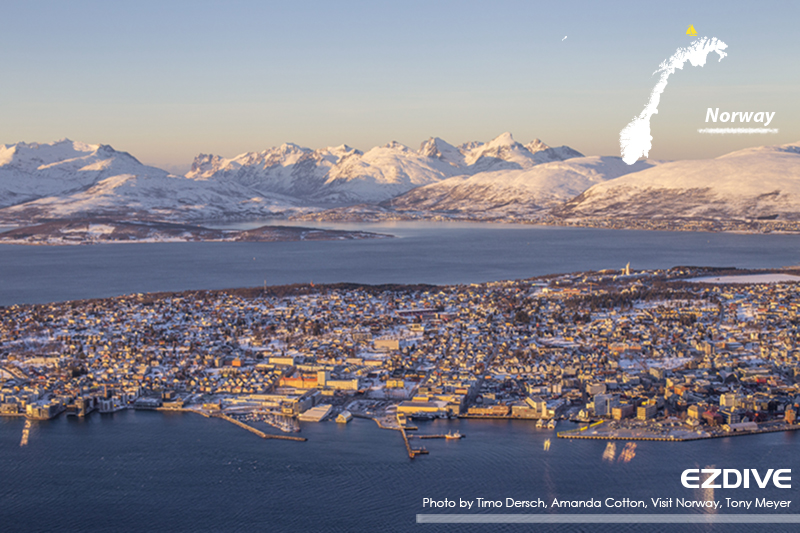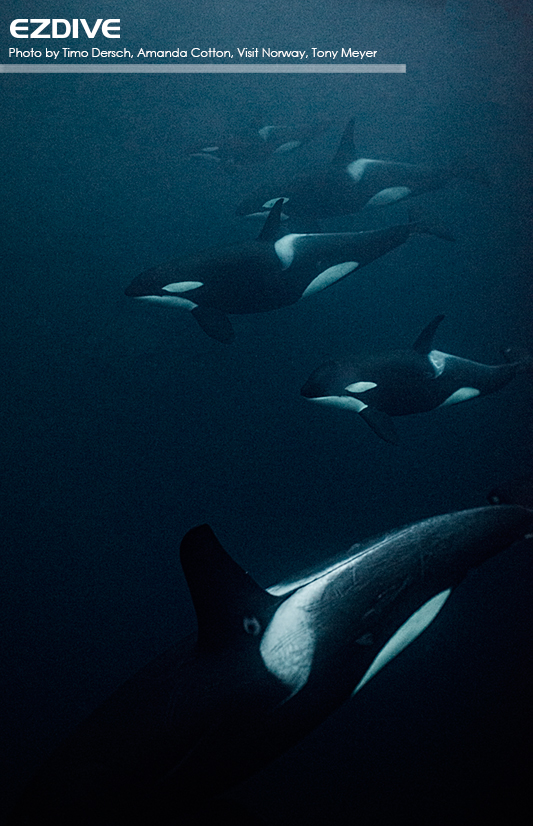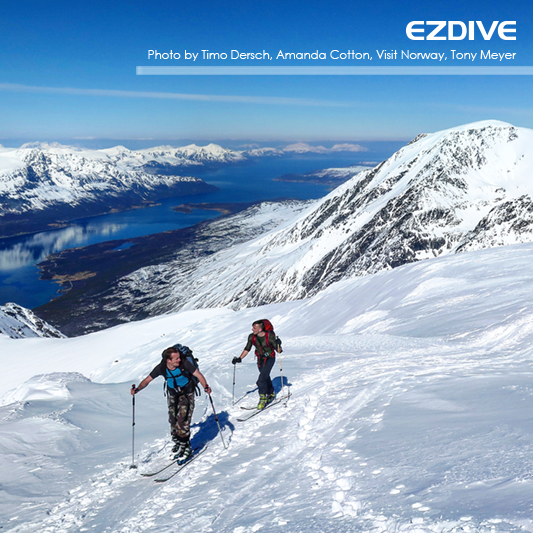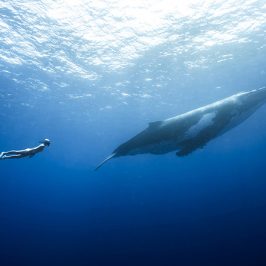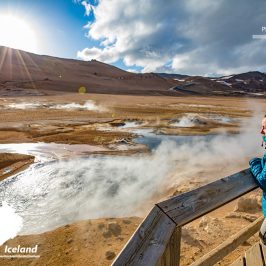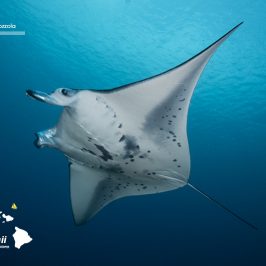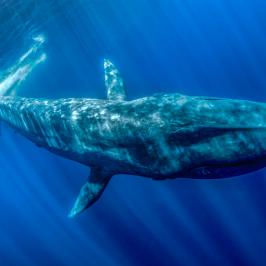In Tromsø, Norway’s capital of the Northern Lights, there is a new natural attraction: divers can now swim between swarms of herring and humpback whale plumes, to see the ‘panda bears of the seas’– Orca whales.
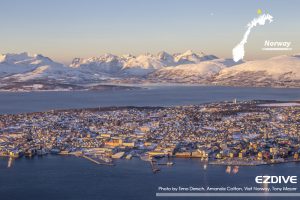
Text: Timo Dersch
Photos: Timo Dersch, Amanda Cotton, Visit Norway, Tony Meyer
Olav Stromsholm and his friend Pierre have a favourite fish – herring. That’s because there is a rule in Norway: if you want to see Orcas you follow the herrings. Olav, an old Norwegian with a captain’s hat, and his tall French companion like the giant mammals almost as much as the little silvery fish. They follow them wherever they swim; they need to know where to find the herring swarms – where they breed, and what they eat – as the tiny fish are the key to sighting the orcas. These beautiful mammals have a new nickname in the marine world – pandas of the sea – as they have similar black and white markings.
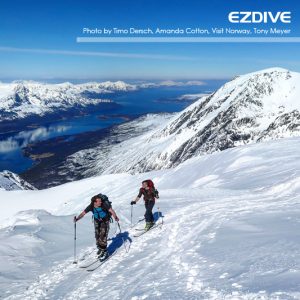
“ The orcas have been coming to Tromsø for three years now,“ Olav murmurs from under his giant moustache, while pitch-black dorsal fins swim up and down in front of him. “The fjord is like McDonalds for them – fast and easy food.”
It is 9.30am. The dark grey sky over Kaldfjord starts to glow and the soft colours of twilight emerge. Not that the sun would come up at any point during the day in winter months, but the three important hours of what they call daylight here, are about to start.
The Sula, 27 meters of powerful stainless steel, hits the water. This former fishing trawler now serves as a floating dive centre and an orca search and research. The ship can host twelve guests plus six crew as a liveaboard, yet even when it is filled to capacity, no one seems concerned that it gets a little crowded. A team spirit evolves because everyone is on the same mission – to see Orcas, as many and as close as possible. Groups from all over the planet travel to board The Sula as the word gets around that the crew almost guarantee an orca sighting even if they wouldn’t phrase it that way.
Birgit Standartinger is shivering. The Austrian biologist has decided against the cosy dry suit the crew provides and 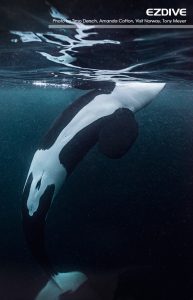 wears her freediving wetsuit instead. “Makes you faster, and gives you better chances to interact,” Pierre had told her the night before. Pierre Robert Delatour is a free diver working as the safety diver. He loves his job. “Once, a big male orca swam straight up to me with a herring in his mouth. He swam around me and proudly presented his catch before eating it. Those are the days you fall deeply in love with these smart animals.’
wears her freediving wetsuit instead. “Makes you faster, and gives you better chances to interact,” Pierre had told her the night before. Pierre Robert Delatour is a free diver working as the safety diver. He loves his job. “Once, a big male orca swam straight up to me with a herring in his mouth. He swam around me and proudly presented his catch before eating it. Those are the days you fall deeply in love with these smart animals.’
Now, Birgit, Pierre, and six other divers are sitting on a little aluminium dingy searching the horizon for dorsal fins. The wind makes Birgit feel like she is sitting in an ice storm and she almost regrets her decision. The snorkellers are in their dry suits and watch her in awe; they feel like taking Birgit in their arms to warm her up just a little but there is no time for that – an orca pod, is approaching the boat. “Three, two, one, go!” and everyone is sliding into the 4ºC water as gently as possible. The less noise, the better to not scare them off.
All the friendly feelings of the group members towards Birgit fade quickly – the snorkellers are floating like marshmallows, trying to gain control over their dry suits, while the young Austrian is in front, getting the closest views as the orcas pass by and able to dive down when they are a little bit deeper. “It was worth the suffering,” she would later say. “When I was underwater there was one orca that left the group to come over and check me out. My heart stopped for a second. He looked right into my eyes. Wow. That was the most intense experience I ever had underwater.”
The animals are often referred to as killer whales, as ruthless murder machines. When they appear, even Great White Sharks, get scared. Or eaten. Many of Birgit’s friends and family had asked her why she wasn’t scared to swim with such brutal animals. “But they are no more a ‘killer’ than any other predator,” she would reply.
She’s right. Orcas don’t kill just for the fun of it, they don’t kill because they’re having a bad day or breakfast didn’t taste good. These giants kill for simply for food. And since they can’t just swallow huge amounts of seawater and filter to the nutrients like other whales, they use some very clever and effective hunting techniques.
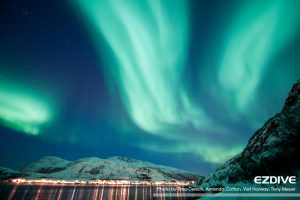 One is known as carousel feeding, a prime example of pure animal intelligence. First, they separate a group of herring from the rest of the swarm then push it towards the surface. The herring form a ball, trying to be a single unit, not just helpless individuals. The orcas play with them like they are on a soccer field, pushing the ball forward and circling it. They threaten the fish by screaming at them, blowing air bubbles, even turning to show their white bellies that reflect light and confuses them.
One is known as carousel feeding, a prime example of pure animal intelligence. First, they separate a group of herring from the rest of the swarm then push it towards the surface. The herring form a ball, trying to be a single unit, not just helpless individuals. The orcas play with them like they are on a soccer field, pushing the ball forward and circling it. They threaten the fish by screaming at them, blowing air bubbles, even turning to show their white bellies that reflect light and confuses them.
The herring get closer and closer together. They try to escape to where there is no escape: the surface. “In these moments the sea is like a boiling soup.” Pierre’s eyes are shining. “Birds come to get their piece of the cake and dive right into the action.” The killer whales hit the herring with their tails – maybe they copied this behaviour from the thresher shark, or perhaps the other way around? Who knows, but the result is the same – a knocked out Omega-3-meal right in front of a hungry orca mouth. Snap it. Scale it. Eat it. The giants spit out the fish bones whole. “We are not sure how they actually do that,“ says Pierre. “Most likely they roll the fish with their tongue alongside their teeth and just press the meat out from between the bones.“
It’s not every day that the guests are lucky enough to see a bait ball with a carousel of killer whales around it. But when they do, it’s like they hit the jackpot. Today, the mood is through the roof. Even without the bait ball, everyone saw their first orcas in the wild, plus a couple of humpbacks, which was the icing on the cake. In the warm, cosy lounge of The Sula, the travellers sip on hot tea and listen to Pierre’s stories about his closest orca encounters. Birgit is still in her own world. She just cannot get rid of the image in her head. The animal was so close, so present, so curious and understanding at the same time. Later, as she lies in bed, she can see the Northern Lights dancing in the sky through her porthole. “Can it get any better than this?” she asks herself. Maybe tomorrow. The fjord is still full of orcas…
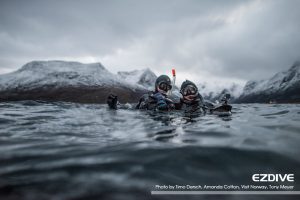
Best travel time:
Mid November to beginning of March
Transport:
Fly with Norwegian Airlines or SAS from Oslo to Tromsø.
Diving:
Water temperature is 4-5ºC degrees. A dry suit is mandatory for dives. For snorkelling, dry suits are available but wetsuits give more freedom. Take thick gloves and socks.
On land:
Bring a tripod for Northern Lights photos. There is no alcohol on The Sula, buy your own before boarding.

